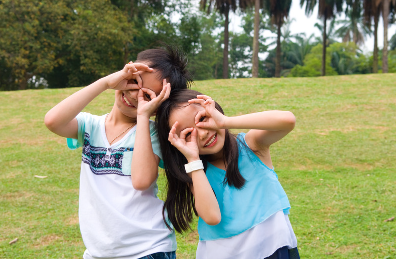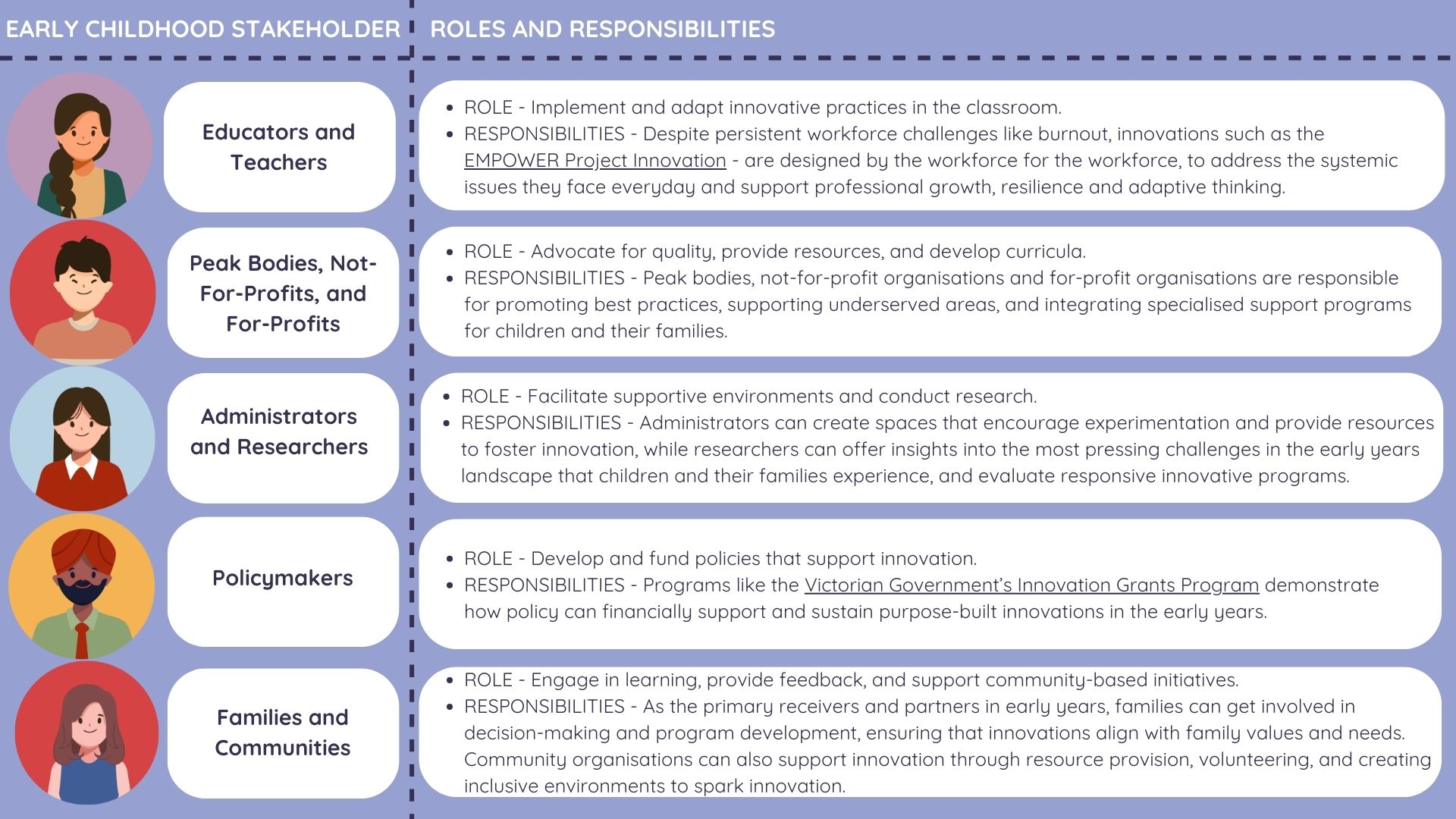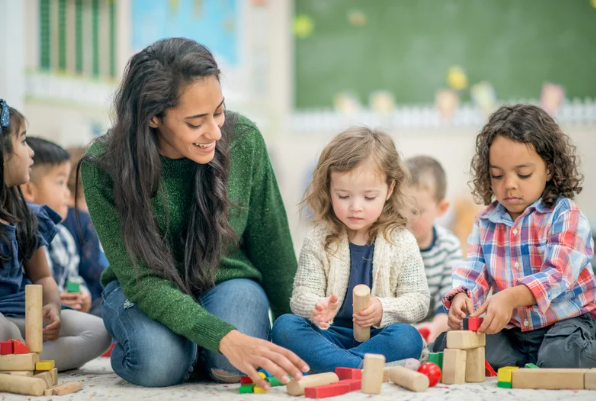Who Can Innovate in the Early Years Landscape and How?

Who's Driving Innovation?
Governments
Federal and state governments lay the foundation for innovation by shaping policies and funding programs. For example, at the national level, the Early Years Learning Framework (EYLF v2.0) and the Early Learning Languages Australia (ELLA) program respectively aim to influence and support play-based learning, and enhance children’s language and digital literacy skills from a young age. On the other hand, at the state level, governments can deliver more targeted, localised innovative interventions. For instance, Victoria's School Readiness Funding program allocates resources to kindergartens based on children’s needs. Another example can be seen in the Queensland Government’s Birdie Tree Early Learning program which integrates natural disaster recovery into curricula, helping children build resilience and adapt to challenges specific to them and where they live.
Peak Bodies
Peak bodies like Early Childhood Australia (ECA) advocate for high-quality early childhood education and provide professional development opportunities and resources that drive innovation. For instance, ECA’s Statement on Young Children and Digital Technologies helps early childhood services integrate digital technologies into their programs and early learning environments, promoting best practices and supporting educators.
Not-For-Profit Organisations (NFPs)
NFPs often pilot innovative programs that address specific community needs. They act as “incubators” (or ovens) where new ideas and models can get cooking and rise if successful. For example, Children's Ground in Northern Territory integrates education, health, and community development to foster pride in cultural identity whilst preparing children for educational success. This helps to close the educational gap for Aboriginal children in remote areas. Another example is Save the Children / 54 Reasons’ Play2learn program which provides free, facilitated playgroups for families who might not otherwise have access to early childhood education services. It also supports families, particularly those on low-income, by offering them resources and social networks, promoting better outcomes for both children and their caregivers.

For-Profit Organisations
For-profit providers bring a business perspective to innovation in the early years. This means that they are largely driven by efficiency, scalability, and responsiveness to market demands. Organisations such as Only About Children (OAC) or The Learning Sanctuary, for instance, have access to more resources and rapidly invest in digital tools, innovative methodologies, and ongoing professional development to improve the quality of education and enhance the overall experience for both children and families. By adopting a customer-focused approach, such organisations can use innovations to enhance the sustainability and appeal of their services.
Community Organisations
Local community groups play a vital role in fostering innovation in early childhood education as they drive grassroots support, collaboration and inclusivity. For example, Karratha Early Learning Centre in WA is parent-led, fostering innovation through direct community input into decision-making and programming. This ensures that their early learning curriculum evolves based on the needs and feedback of local families. Another community championing innovation in early childhood is Tagai State College in the Torres Strait. By blending modern early childhood education practices with traditional learning methods involving Elders, Tagai's place-based localised curriculum ties learning to the children’s environment and everyday lives. This fosters a strong, enduring sense of identity connected intrinsically with community.
Academic Institutions
Universities and research institutions are vital in bridging theory and practice with regards to innovation in early childhood. They collaborate with other early childhood stakeholders to apply research findings in practical settings. With each application, evidence is generated which shows the true value of innovation in this sector. For example, the Australian Research Alliance for Children and Youth (ARACY) works with educators to translate research into actionable practices such as workshops and training for educators, while partnerships like the University of Melbourne's Research in Effective Education in Early Childhood (REEaCh) initiative implement and evaluate innovative teaching strategies directly in early learning centres.
Children and Families
Children and families play a crucial role in driving innovation in the early years landscape, often as co-creators of new approaches and solutions in early childhood education. By actively engaging in learning and decision-making processes, families and children bring unique insights that can shape more personalised, inclusive, and culturally relevant educational experiences. In fact, some of the most impactful innovations arise from listening to the voices of children and families who provide firsthand knowledge about their needs, aspirations, and cultural contexts. The Bubup Wilam for Early Learning in Naarm, Melbourne, Victoria, for example, integrates family knowledges into its curriculum. This fosters culturally responsive learning that is both more relevant and appealing to local families and children as they can guide their own learning, sparking creative and experiential innovations based on their curiosity and exploration.
This wraps up our coverage of the “who’s who” of innovation in the early years. As you’ve read, innovation is a collaborative effort driven by diverse players, yet everyone is working towards the same goal: to create meaningful and transformative positive learning experiences for young children.

Roles and Responsibilities in Fostering Innovation
Before we jump into the “how” side of innovation, we must first look at the different roles and responsibilities that each of the above players carry when cultivating innovation in the early years. To make life simpler, we’ve created a simple graphic to illustrate this in a simpler way.

How to Innovate
Now that we’ve explored the “who” of innovation in the early years, let’s get into the “how”.
When thinking about how we innovate, it doesn’t happen by accident. Although it would be great if it did, innovation nevertheless largely requires intentional strategies and tools, as well as a supportive ecosystem or culture in order to be sustainable and successful. In this case, a successful innovation is one which fosters creativity and collaboration, generating positive, lasting change that improves the quality of children’s early childhood experiences.
Let’s first take a look at some helpful strategies and tools for innovation in the early years:
Professional Development (PD) and Training: For early childhood teachers and educators, continuous professional development fosters a culture of lifelong learning and innovation. Professionals who engage in PD such as workshops and seminars, online courses and webinars, mentorship and coaching, action research and training are better equipped to adapt to new challenges, integrate fresh ideas, and implement evidence-based practices. The Australian Professional Standards for Teachers framework, for example, supports educators by ensuring their skills, pedagogies and knowledge remain relevant and innovative.
Collaborative Networks: Establishing networks between stakeholders, such as those facilitated by ECA, promotes the exchange of ideas and best practices. Collaborative networks and professional learning communities provide a space for professionals to meet regularly, discuss challenges, and brainstorm innovative solutions. In doing so, stakeholders are able to enhance the quality of the services they provide, ensuring children have the best experiences possible in their earliest years.
Digital Tools and Technological Integration: Incorporating digital tools in early childhood education opens up a wealth of innovative possibilities to support both teaching and administrative processes. Technology can enhance learning experiences, improve operational efficiency and reduce paperwork admin, and provide educators with valuable insights into children’s development. For example, educational Apps such as The Kid Sense Speech Therapy App provide resources for supporting children’s speech and language development whilst interactive learning platforms like SeeSaw and Storypark allow educators to document and share children’s learning with families in real time.
Action Research and Pilot Programs: Action research and pilot programs are key strategies for testing and refining innovative ideas in real-world settings, leading innovations to become more useful and effective in delivering their intended goals. Universities and research centers play a crucial role in providing research support to ensure that innovations are evidence-based and thoroughly tried and tested before they are delivered to wider audiences. For example, an early learning center might introduce a new STEM program or mindfulness activities, monitor the effects, and refine their approach based on the results. Action research like this fosters a culture of innovation experimentation and growth.
Community and Cultural Engagement: Engaging families and communities ensures innovations are culturally relevant, inclusive, and supported outside the classroom. Family partnership models which involve parents in decision-making, and community-led programs which involve collaboration between playgroups and early learning centres for example, drive innovation because they help to address the issues that families and the local community say are the most urgent. By involving families and communities in innovation processes, product development, or otherwise, early years services can foster stronger home-to-centre connections, better meet children’s needs, and champion local values in their work.

Creating a Culture of Innovation
Having the tools and strategies to innovate is one part of the puzzle, however another part is having a supportive culture that enables innovations to flourish. This is crucial because an idea is and will always be just an idea unless it has the proper conditions and support to become something more.
Picture it this way, a plant cannot grow if it does not have the right environmental conditions such as water, sunlight and carbon dioxide. Innovations are the same, but instead of water, sunlight, and carbon dioxide, they need different conditions to create a supportive atmosphere in which to thrive.
So, what are these conditions? Encouraging open communication, collaboration, and risk-taking among educators, families, and communities are incredibly important. They signal that there is value for diverse perspectives and promotion of a growth mindset, meaning that early years services and organisations can empower their workforce to share their insights and experiment with new approaches.
Other conditions to build a supportive culture of innovation are a clear vision that articulates the importance of innovation in early childhood and a shared understanding of the goals and benefits of innovation as this can help align efforts and motivate stakeholders. Additionally, regular evaluation of early learning programs and practices can help to identify areas for innovation and encourage reflection on areas for improvement regarding existing innovations. Finally, let’s remember that a culture of innovation is often only possible if there are examples of success to inspire others. Recognition of successful innovations within the community can motivate educators, children, and families to adopt innovative practices which enable a more dynamic and responsive educational environment for children.
Put simply, fostering a culture of innovation matters. It enables early years stakeholders to navigate challenges, enhance learning outcomes, and build engagement, creativity and resilience. In this way, cultivating an innovative culture is not just beneficial in allowing teams to continuously improve their practices; it is vital for ensuring that all children receive the rich, responsive learning experiences they deserve.
Conclusion
Innovation in the early years is truly a collective effort. By leveraging the diverse strengths of various stakeholders—governments, peak bodies, NFPs, for-profits, academic institutions, families, children, and communities—we can create a dynamic and impactful early years landscape. Through continuous professional development, collaborative networks, technological integration, research, and community engagement, these key players can drive sustainable innovation, ensuring every child thrives in a supportive and enriching learning environment.
In our next article, we'll take a global view, exploring international innovation 'bright spots' and what they can teach us here in Australia. Get ready to discover how groundbreaking ideas from around the world could inspire new possibilities in our local contexts!

What Do YOU Think? Share Your Thoughts With Us!
Share your thoughts with us via email, and stay hungry for more! We’ve got a full menu of articles on innovation in the early years coming your way. Together, let’s think of some fresh ideas to serve up a brighter future for our little ones! Keep those creative juices flowing!
Kate Oubridge-Egan – Innovation Lab Manager, The Front Project
Resources:
Australian Children’s Education & Care Quality Authority. (2022). Belonging, Being and Becoming: The Early Years Learning Framework for Australia (Version 2.0). Available at: https://www.acecqa.gov.au/sites/default/files/2023-01/EYLF-2022-V2.0.pdf
Australian Government Department of Education. Early Learning Languages Australia (ELLA). Available at: https://www.education.gov.au/early-learning-languages-australia
Australian Institute for Teaching and School Leadership (AITSL). Australian Professional Standards for Teachers. Available at: https://www.aitsl.edu.au/standards
Australian Research Alliance for Children and Youth (ARACY). About ARACY. Available at: https://www.aracy.org.au/about-us
Bubup Wilam. Bubup Wilam Early Years. Available at: https://bubupwilam.org.au/early-years/
Child Development. KidSense Speech Therapy App. Available at: https://childdevelopment.com.au/speech-therapy/
Children’s Ground. Children’s Ground: Early Years Programs. Available at: https://childrensground.org.au/
Early Childhood Australia (ECA). Early Childhood Australia. Available at: https://www.earlychildhoodaustralia.org.au/
Early Childhood Australia (ECA). Collaborative Networks for Early Childhood Innovation. Available at: https://www.earlychildhoodaustralia.org.au/
Early Childhood Australia (ECA). (2018). Digital Business Kit: Policy Statement. Available at: https://www.earlychildhoodaustralia.org.au/wp-content/uploads/2018/10/Digital-policy-statement.pdf
Karratha Early Learning. Karratha Early Learning Centre. Available at: https://www.karrathaearlylearning.com.au/
Only About Children (OAC). Health, Education, and Wellbeing with OAC. Available at: https://www.oac.edu.au/?utm_term=only%20about%20children&utm_campaign=Brand+-+VIC&utm_source=adwords&utm_medium=ppc&hsa_acc=3250705420&hsa_cam=910737278&hsa_grp=43768163017&hsa_ad=713989805732&hsa_src=g&hsa_tgt=aud-1109699514677:kwd-348963720445&hsa_kw=only%20about%20children&hsa_mt=e&hsa_net=adwords&hsa_ver=3&gad_source=1&gclid=EAIaIQobChMI_43Zsp7diAMV8KhmAh1cZQKbEAAYASAAEgKB3_D_BwE
Queensland Government Children’s Health Queensland. Birdie’s Tree Early Childhood Curriculum. Available at: https://www.childrens.health.qld.gov.au/our-work/birdies-tree-natural-disaster-recovery/birdies-tree-early-childhood-curriculum
Save the Children Australia. Play2Learn: Early Childhood Education Program. Available at: https://www.savethechildren.org.au/our-work/our-programs/australia/play2learn
Seesaw. Seesaw Learning App. Available at: https://app.seesaw.me/#/login
Storypark. Storypark Digital Learning Tools. Available at: https://app.storypark.com/
Tagai State College. Tagai State College Early Years Learning Programs. Available at: https://tagaisc.eq.edu.au/
The Learning Sanctuary. The Learning Sanctuary: Early Childhood Learning Centres. Available at: https://www.thelearningsanctuary.com.au/
University of Melbourne. Research in Early Education and Care (REEaCh). Available at: https://education.unimelb.edu.au/REEaCh
Victorian Government. Early Childhood Innovation Grants Program. Available at: https://www.vic.gov.au/media/978334
Victorian Government. Innovation Grants Program. Available at: https://www.vic.gov.au/innovation-grants-program
Victorian Government. School Readiness Funding. Available at: https://www.vic.gov.au/school-readiness-funding
